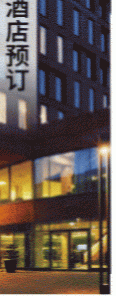|
  
- 积分
- 22836
- 威望
- 3456
- 金钱
- 11
- 阅读权限
- 100
- 性别
- 男
- 在线时间
- 2752 小时
|
18#
 发表于 2006-4-27 21:59
发表于 2006-4-27 21:59
| 只看该作者

MIT画报事件:Prof. Dower is Biased 的一些证据
Prof. Dower is Biased 的一些证据:
skydive太牛啦原文:
http://mitbbs.com/mitbbs_article ... 5730427&ftype=0
证据一:
"Old" China was the Anti-West, the Anti-Modern (a notion China?ˉs ownCommunist leaders would later embrace with a vengeance themselves). As aconsequence, while the corpses were unmistakably and brutally Chinese,they stood for a great deal more as well.先把old china骂一通,然后又嘲笑中共。然后,有赞美日本军国主义分子自立自强。
From the Japanese perspective, the denigration of the Chinese thatpermeates the Sino-Japanese War prints was really secondary to theobverse side of this triumphal new nationalism. It was secondary, thatis, to the story of the surpassing discipline and self-sacrifice ofJapanese from every level of society. That is why many of the mostmemorable war prints do not depict the enemy at all, but rather focus onthe Japanese alone. Sometimes they are simply battling raw nature(the fierce blizzards and turbulent seas), sometimes simply shown incontrol of the powerful machinery of modern warfare. Always there is acelebration of brave men engaged in a noble mission?athrowing themselvesagainst an ominous, threatening, but also thrillingly challenging andalluring world.
证据二:
再看这段:
那个清兵斩首图,对日本人屠杀的行为只有一个没有褒贬色彩的词“frightful”。----有一个字对这种暴行的谴责吗?有的只是洋洋得意的转述,用的都是赞美的字眼:benevolence, civilized,
heroic。中国人:barbarity, violent, rebellious.也没有任何对这种歪曲事实的军国主义宣传的谴责。
Kokunimasa offered a harsh “Illustration of the Decapitation of ViolentChinese Soldiers” that included a lengthy inscription. The benevolenceand justice of the Japanese army, this text explained, equaled and evensurpassed that of the civilized Western nations. By contrast, thebarbarity of the Chinese was such that some prisoners attacked theirguards. As a warning, the Japanese—as depicted in the print—hadbeheaded as many as thirty-eight rebellious prisoners in front ofother captured Chinese. The Rising Sun military flag still flutteredin one panel of Kokunimasa’s print; the stalwart cavalry officerstill surveyed the scene; the executioner still struck the familiarheroic pose with upraised sword. The subject itself, however, andsevered heads on the ground, made this an unusually frightful scene.
证据三:
再补充:
整个Old China, New Japan长长的3300个词的介绍,注释中,只有这一句话貌似谴责了日本:
This poisonous seed, already planted in violence in 1894-95, would burstinto full atrocious flower four decades later, when the emperor?ˉssoldiers and sailors once again launched war against China.
就算这句话,也只是说变相的种族主义导致了战争,没有任何对日本战争暴行本身的谴责。
 |
|










 发表于 2006-4-27 11:48
|
发表于 2006-4-27 11:48
| 























